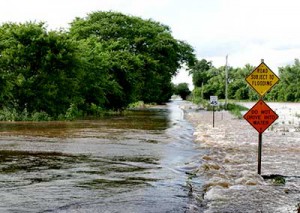How Impervious Surface Impacts Stream Health
 “Impervious surface” refers to all hard surfaces like paved roads, parking lots, roofs, and even highly compacted soils like sports fields. The problem with impervious surfaces is that they prevent the natural soaking of rainwater into the ground and slowly seeping into streams. Instead, the rain water accumulates and flows rapidly into storm drains. This results in severe harm to streams in three important ways.
“Impervious surface” refers to all hard surfaces like paved roads, parking lots, roofs, and even highly compacted soils like sports fields. The problem with impervious surfaces is that they prevent the natural soaking of rainwater into the ground and slowly seeping into streams. Instead, the rain water accumulates and flows rapidly into storm drains. This results in severe harm to streams in three important ways.
- Water Quantity: storm drains deliver large volumes of water to streams much faster than would occur naturally, resulting in flooding and bank erosion. Stream inhabitants are stressed, displaced, or killed by the fast moving water and the debris and sediment it brings with it.
- Water Quality: pollutants (gasoline, oil, fertilizers, etc) accumulate on impervious surfaces and are washed into the streams.
- Water Temperature: during warm weather, rain that falls on impervious surfaces becomes superheated and can stress or kill stream inhabitants.
All stream inhabitants are harmed by impervious surfaces, but some are more sensitive than others. Brook trout, for example, are not found in watersheds with more than 4% impervious surface. Some salamanders disappear from watersheds with as little as 0.3% impervious surface!
Less Impervious Surfaces, Healthier Streams